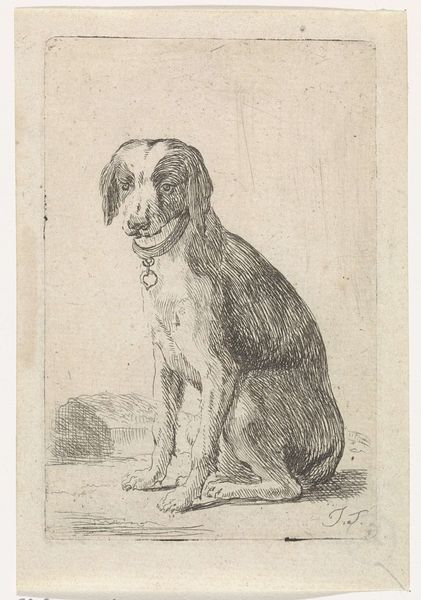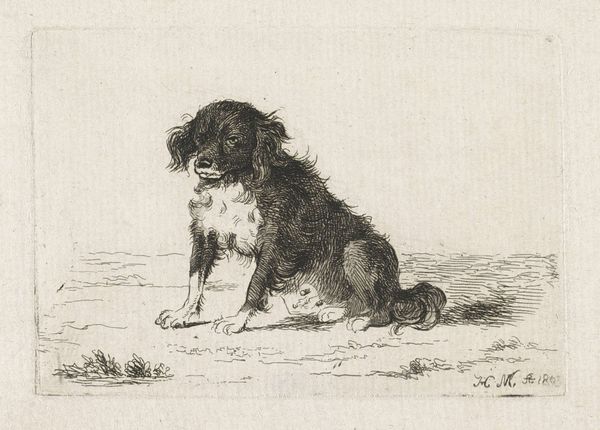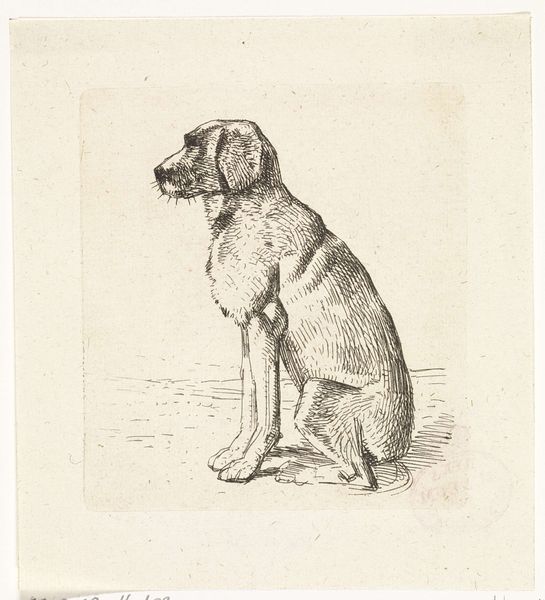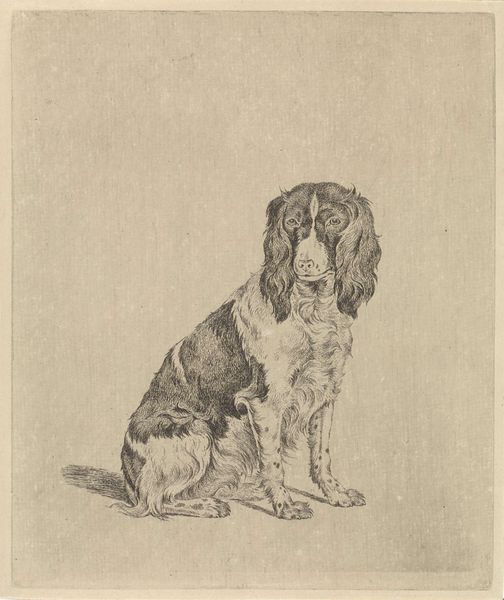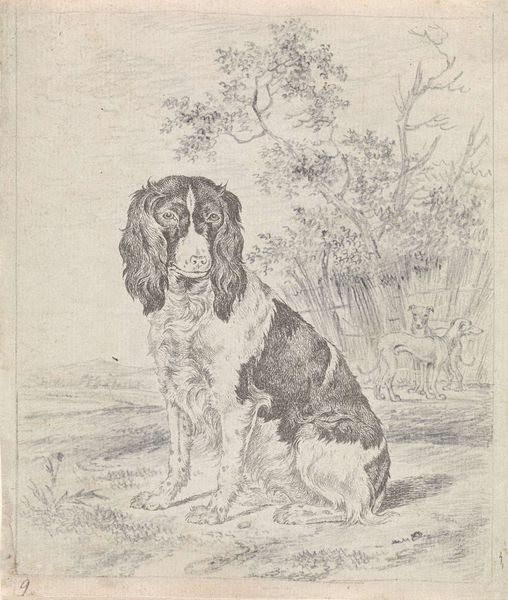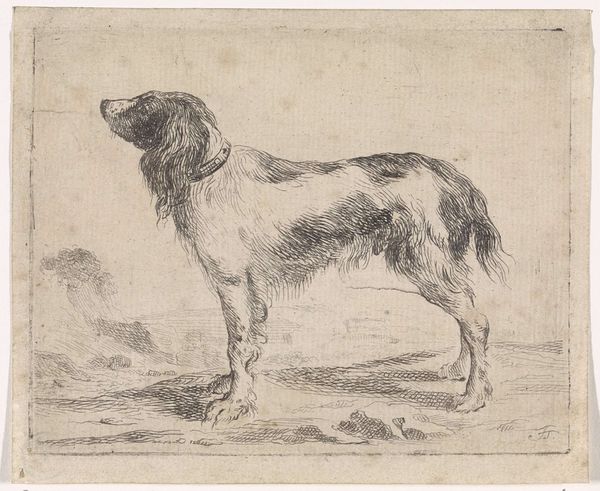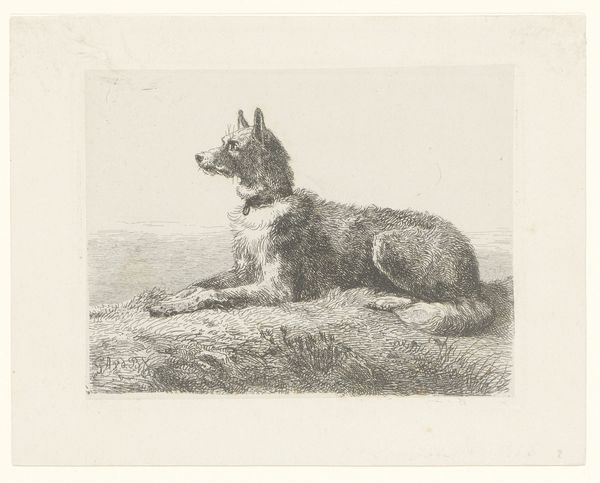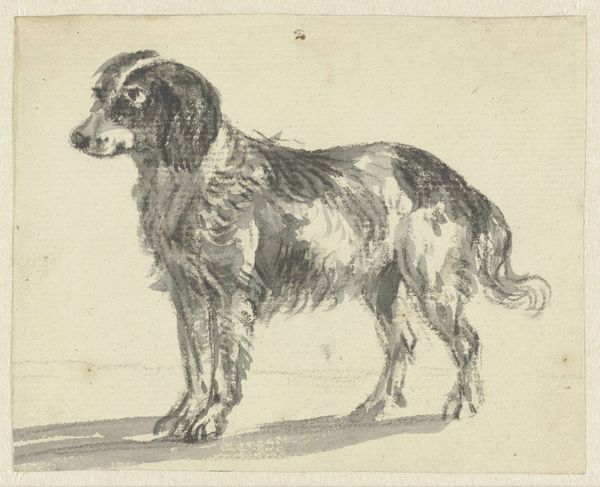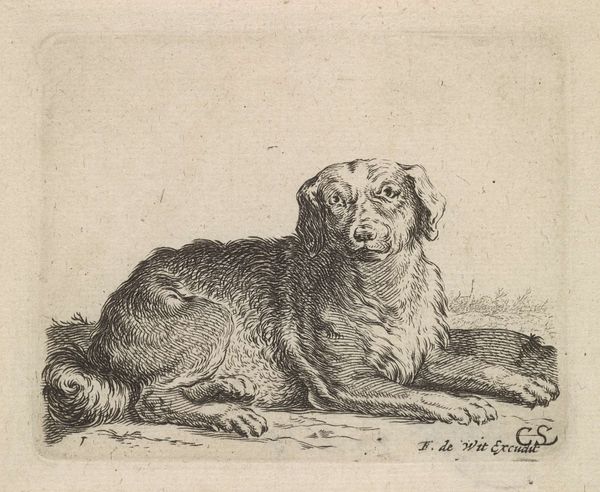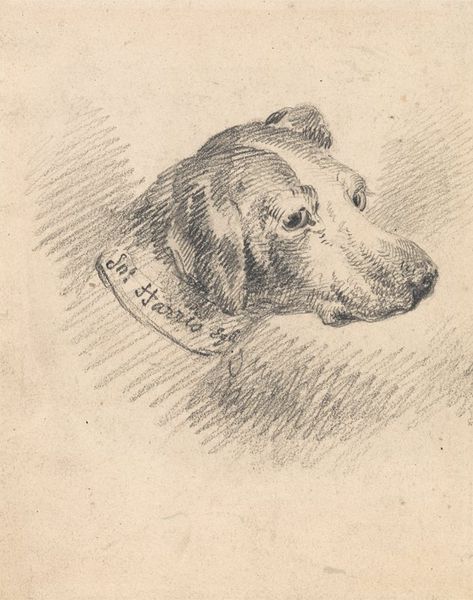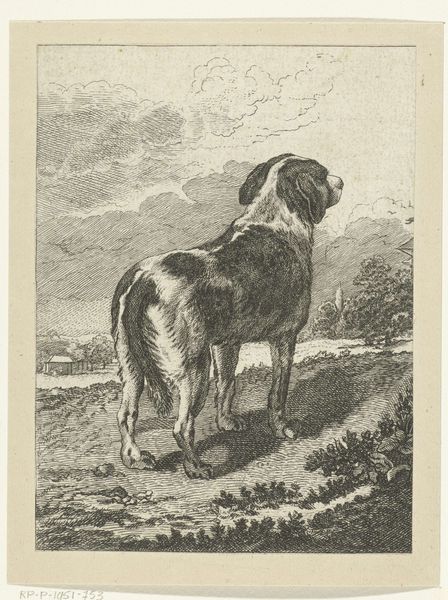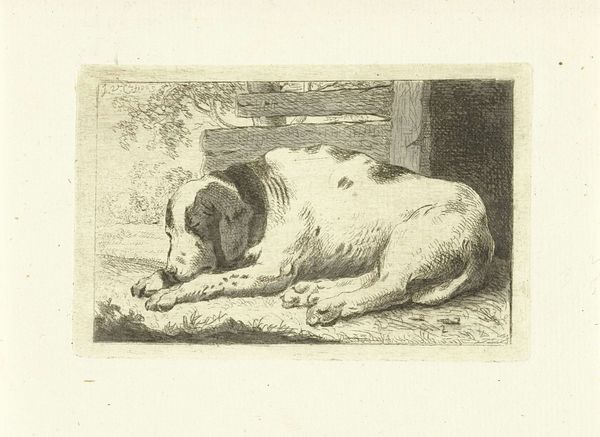
print, etching
#
portrait
# print
#
etching
#
landscape
#
realism
Dimensions: height 79 mm, width 66 mm
Copyright: Rijks Museum: Open Domain
Editor: We're looking at "Zittende hond aan de ketting bij een hondenhok," or "Sitting dog on a chain by a doghouse," an etching by Christiaan Wilhelmus Moorrees, created sometime between 1811 and 1867. It’s a very simple composition, but the dog’s eyes are so expressive. How do you interpret this work? Curator: Well, immediately I consider the social context of animal ownership during that period. This was a time of changing relationships with animals, moving away from purely utilitarian purposes. How does the dog's confinement within this ‘landscape’ reflect broader societal constraints or power dynamics present in 19th-century life? Do you get a sense of isolation from the image? Editor: I do. The chain obviously suggests a lack of freedom, and his sad expression only enhances that feeling. Curator: Exactly! This print functions on a broader political level. Was Moorrees, through realism, subtly critiquing certain structures? The chain acts not only on a literal level, but on a metaphorical one too; it’s as if it serves as commentary on restrictions of the spirit. The museum’s presentation of this work then becomes an active part of this historical dialogue. How should *we* present the art of constraint? Editor: That makes me think differently about how simple it appears at first glance. The image's presentation in a modern museum adds another layer, a contemporary discussion about freedom and societal norms. Curator: Precisely! We move the politics from the artwork to the viewer, urging them to acknowledge that we are all involved, however willingly, in such impositions. It’s a potent statement of power relationships that's sustained through curation. Editor: I appreciate how you framed it. I was initially focused on just the animal's feelings. It is really is more multifaceted when considering its role in society. Thanks!
Comments
No comments
Be the first to comment and join the conversation on the ultimate creative platform.
